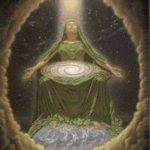
Back in the late 1980s, while engaged in a graduate program in transpersonal psychology, I took a class in Creation Spirituality with Matthew Fox, the former Dominican priest, theologian, and author of 37 books including Creation Spirituality: Liberating Gifts for the Peoples of the Earth. This was my first significant foray into the idea that God has a pervasive, life-giving, maternal creative function.
At the time, from the viewpoint of the magisterium of the Roman Catholic Church, Fox’s perspective bordered on heresy. He was booted from the Dominican priesthood but later, in 1994, he was received as a priest in the Episcopal Church by Bishop William Swing.
Nonetheless, the concept of creation spirituality was planted in my mind as something worth pondering. Creation spirituality posits that God is in all things (panentheism), that divinity permeates all things, and that all things bear the energetic blueprint of divinity. That is not to say that God is all things, which is a pantheistic assertion, although it is true to say that without God or a Primal Cause, nothing would exist.
There is a resonance of this attribute of God’s everywhereness in the Urantia revelation where we read that “The Infinite Spirit pervades all space and indwells the circle of eternity” [34:3.2]. The same is true of the Creative Daughters of the Infinite Mother Spirit at the local universe level. Consider the statement that “the Divine Minister of Salvington is everywhere in Nebadon” [45:1.8].
When the Creative Daughter commences the awesome act of conjoint creation with the Creator Son, we learn that, from the vast energy source of her being, “there proceed the established currents and the ordained circuits of spirit power and spiritual influence destined to pervade all the worlds and beings of that local universe” [34:1.2]. From this passage, and other references throughout the Urantia revelation, we can glean a picture of an all-enveloping spiritual omnipresence that permeates all the space, all the architectural and evolutionary worlds, and all the beings of the Mother Spirit’s universe with diverse currents of spiritual-mindal energy and discrete channels of her personal presence that provide her with the means to connect and communicate with all the inhabitants of her universe.
These manifest powers and attributes help us to better understand the nature of this great Creative Daughter of the Infinite Spirit and her omnipresent function as the Divine Mother of all her creatures, the source of life, mind, and spirit power in the universe. She is wholly different in her omnipresent nature and in many other functions from the Creator Son, the Father of our local universe and the unique, original Son of the Universal Father and Eternal Mother Son.
The Creator Son is a divine being who, unlike the Creative Daughter—his eternal co-creative and co-ruling partner—is wholly unlimited by the constraints of time in the grand universe, but who can only be in one discrete location at a time, unlike the Divine Mother who is everywhere within the bounds of her local universe.
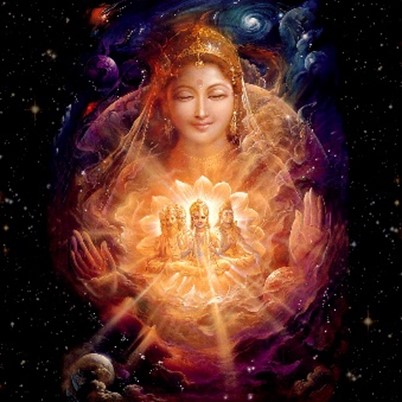
How overlooked and under-appreciated is the Divine Mother in most world religions, except for Hinduism which reveres the Great Mother Goddess Devi, the one who embodies all aspects of womanhood and motherhood. Devi is as powerful as the top male gods of the Hindu Trinity—Vishnu and Shiva. While gentle, loving, and nurturing in her motherly function, Devi is also sometimes fierce in the exercise of her awesome cosmic power to create and destroy worlds.
Our Divine Mother – MIA (Missing in Action)
While I had already been exposed to the Universe Mother Spirit in The Urantia Book, I tended to pass over her everywhere presence in space and mind and her awesome creative powers, as perhaps many other Urantia Book readers have done. In fact, it seems to me the Father concept of God overshadows the Mother concept of God in The Urantia Book to such an extent as to almost obliterate the maternal aspect of God, somewhat akin to the hazy glow of the moon lost in the bright light of the sun.
Growing up in the western patriarchal culture of Judeo-Christianity, the anthropomorphic image of God presented to me was completely male in terms of an Old Testament Father God and the New Testament Son of God. Why did I not sooner question the missing mother in the divine family of the Paradise Trinity? Is religious culture so pervasive that, like a fish in water that does not question the water which surrounds it, we do not even notice or question the absence of the mother function in the symbolic representation of the Trinity?
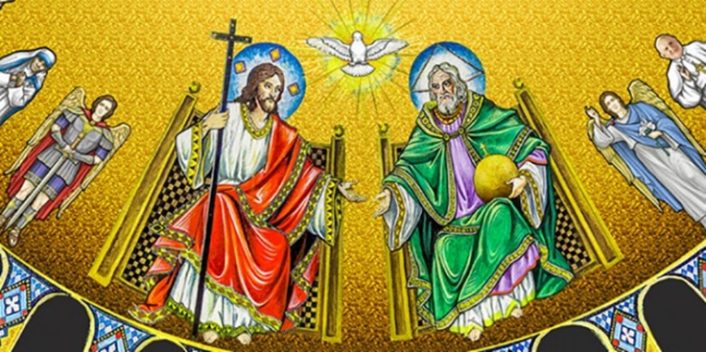
The meme above has circulated around the Internet. What’s wrong with this picture?
The first thing that comes to my mind is that the Infinite Spirit is a Person. We need a better, more truth-revealing symbol of the Infinite Spirit and Creative Mother Spirit for the new millennium and beyond because there is a growing rejection of the old Christian symbology. A bird symbol is simply not adequate, chiefly because it lacks personality—personal spiritual omnipresence.
The Infinite Spirit is just as much a complement of the Eternal Son as the Son is a complement of the Universal Father. The Eternal Son is a spiritualized personalization of the Father; the Infinite Spirit is a personalized spiritualization of the Eternal Son and the Universal Father. [Paper 9:2.2, page 100.4 emphasis added]
Those who study divinity in the Urantia revelation know that the Universal Father is not alone in infinity and has never acted alone in the cycles of eternity, notwithstanding the absolute truth that he is the First Source and Center of all that is. Always existentially and eternally co-present are the other two Absolutes—the Eternal Mother Son and the Infinite Spirit, the Conjoint Actor of the Trinity. This is the Original Family Relationship of Paradise. All Three Persons, in the undivided unity of the Paradise Trinity, appear to be necessary for the creation, diversity, variability, and maintenance of the grand universe in the present Age of the Supreme.
While reason demands a monotheistic unity of cosmic reality, finite experience requires the postulate of plural Absolutes and of their co-ordination in cosmic relationships. Without co-ordinate existences there is no possibility for the appearance of diversity of absolute relationships, no chance for the operation of differentials, variables, modifiers, attenuators, qualifiers, or diminishers. [Paper 104:3.4, page 1146.6]
So where is the mother aspect of God in the religious cultures of our evolutionary world, particularly in the Judeo-Christian and Islamic traditions?
What happened to arrest the development of the true Trinity concept in the Western world—the reality of a Three-Persons-in-One-God who demonstrates a Divine Family of Father, Mother, and Child who are equal and one with each other?
There are numerous descriptions of the Three Persons of the Paradise Trinity and their family relationship in the Urantia revelation:
Concerning identity, nature, and other attributes of personality, the Eternal Son is the full equal, the perfect complement, and the eternal counterpart of the Universal Father. In the same sense that God is the Universal Father, the Son is the Universal Mother. And all of us, high and low, constitute their universal family. [Paper 6:8.1, page 79.4]
The first act of the Infinite Spirit is the inspection and recognition of his divine parents, the Father-Father and the Mother-Son. He, the Spirit, unqualifiedly identifies both of them. He is fully cognizant of their separate personalities and infinite attributes as well as of their combined nature and united function. [Paper 8:1.2, page 90.6]
The Infinite Spirit is a complete and perfect personality, the divine equal and co-ordinate of the Universal Father and the Eternal Son. [Paper 8:6.2, page 96.4]
The Son and the Spirit now preside over the universe much as a father and mother watch over, and minister to, their family of sons and daughters. [Paper 33:3.7, page 369.2]
Returning to the idea of our missing Divine Mother, what might be the fallout on a sociological level of our impoverished spiritual thinking about the Father God and Mother God, functions of the existential Trinity, their pattern of divine family, as well as our Local Universe Divine Parents, on the development of religious culture and civilization in our evolutionary world? And what might be the subsequent impact of this deficient and unbalanced view of Deity on the roles and relative value of men and women in society and their unequal status in many world cultures?
These are questions, I think, that we ought to be raising as students of the Urantia revelation, which has as one of its primary purposes the upgrading of evolutionary religions, spiritual thinking, and planetary civilization. While we cannot address these questions adequately within the scope of this article, I do think it is up to us as religious thinkers—men and women alike—to address this vital intersection of revelation and evolution and contribute higher divine concepts to the further spiritual awakening of humankind.
The study of human religion is the examination of the fossil-bearing social strata of past ages. The mores of the anthropomorphic gods are a truthful reflection of the morals of the men who first conceived such deities. Ancient religions and mythology faithfully portray the beliefs and traditions of peoples long since lost in obscurity. These olden cult practices persist alongside newer economic customs and social evolutions and, of course, appear grossly inconsistent. The remnants of the cult present a true picture of the racial religions of the past. Always remember, the cults are formed, not to discover truth, but rather to promulgate their creeds. [Paper 92:3.1, page 1005.3]
Modern man is adequately self-conscious of religion, but his worshipful customs are confused and discredited by his accelerated social metamorphosis and unprecedented scientific developments. Thinking men and women want religion redefined, and this demand will compel religion to re-evaluate itself. [Paper 92:7.13, page 1013.8 emphasis added]
Modern man is confronted with the task of making more readjustments of human values in one generation than have been made in two thousand years. And this all influences the social attitude toward religion, for religion is a way of living as well as a technique of thinking. [Paper 92:7.14, page 1013.9]
This article is an attempt to raise questions about the relationship of confused and outmoded theological concepts and symbols to the development of religious culture and civilization. And it’s an effort to introduce higher spiritual concepts and promote the cross-fertilization of ideas and values in discussions between thinkers in the fields of revelatory religion, philosophy, social psychology, and social-cultural anthropology, including the anthropology of religion.
Religious concepts and values are inseparable from social culture. They have shaped the development of society and culture from the very first humans. The way we think about God, the meaning of existence, what lies beyond death, and the value we assign to persons and all life, profoundly and absolutely influences the evolution of our folkways, mores, taboos, and laws—the social norms that govern our beliefs, behavior, and interactions with others.
The progress of world civilization toward light and life depends greatly on the higher spiritual meanings and values of revealed religion, the Urantia revelation being the latest such divine framework for helping our world cultures to evolve spiritually, socially, and intellectually.
Yes, We Do Have a Creative Mother God, but She is Submerged in Many World Cultures
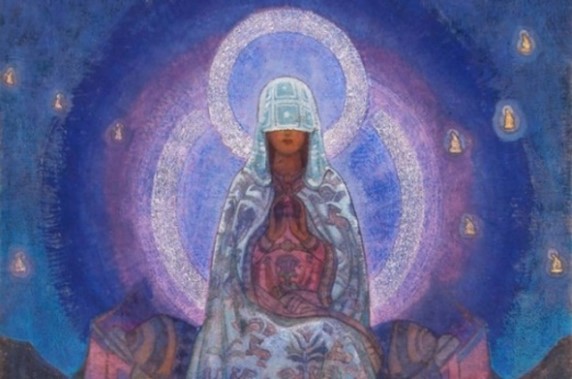
Going back to my class on creation spirituality, Matthew Fox stated an idea that seared itself in my mind and has stirred my thinking ever since. He spoke words to the effect that, “If I wanted to create a world that would be doomed to eventual extinction, I would create a world with only a Father God and no Mother God.”
Although the concept of the Blessed Trinity was emblazoned in my soul as a child, I was ignorant of the mother-like character of God. Suddenly I saw the Roman Catholic religion in which I had been raised in a whole new light. It was missing God the Mother and that void was so glaring—and revealed a need for a Mother God so great—that billions of Catholics over the centuries had practically deified Mary, the human mother of Jesus, to fill the missing space.
But Mary was, after all, only human, not a Person of the Paradise Trinity. Yet for the last two thousand years, countless millions have shown her the reverence, love, and near-worship that is usually reserved for God the Father in Paradise. Why?
One answer to the question may be the existence of a deep and ancient need in the human psyche—embedded there by both earlier epochal revelations of the Paradise Trinity to humankind and by the adjutant mind spirit of worship and the Holy Spirit that have been at work for a million years in our progressive human evolution—for a feminine representation of God as Mother to balance and complement an all-powerful Father God.
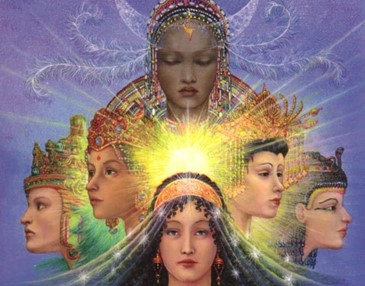
This is evidenced by the many female personifications of Deity that are found in the animistic religions and artifacts of ancient societies as well as the major religions of Asia. Some of the better-known goddesses are Gaia, Isis, Hecate, Rhea, Thiên Y A Na, Devi, Parvati, Durga, Kali, Saraswati, Lakshmi, Tara, and Kwan Yin.
In fact, we do have an unrecognized Mother God who is utterly personal and mindally present in our bodies through her Adjutant Mind Spirits and her Holy Spirit. She is in us and all around us in her pervasive everywhere presence. Our beingness is suffused with the mind and life energy of the Mother. And she ministers to us through her countless daughter spirits, our seraphic guardians.
In fact, like the fish that are unaware of water because they are so completely in it as to not even recognize it or question it, so too, do we exist unaware of the pervasive mind and energy fields of the Creative Mother Spirit. But with the proper education, techniques, and encouragement to enhance our spiritual perception, we might just be able to develop the ability to become conscious of, and tune into, the triune spiritual influences in us and around us, including the personalized spiritual presence of the Holy Spirit.
Again, The Urantia Book provides us with significant detail about the all-pervading spiritual presence of the Infinite Spirit, the Creative Daughters of the Infinite Spirit, and our contact with her personalized presence. Are we not told the fundamental quality of personality is its ability to always recognize and make contact with other personalities?
In personal prerogatives a Creative Spirit is … equally and diffusely present throughout her entire local universe and is, therefore, just as literally and personally present on one world as on any other. [Paper 34:3.3, page 376.6 emphasis added]
This personalized presence of the Infinite Spirit, the Creative Mother Spirit of the local universe, is known in Satania as the Divine Minister. To all practical intents and spiritual purposes, this manifestation of Deity is a divine individual, a spirit person. [Paper 34:1.4, page 375.3 emphasis added]
There are numerous passages in The Urantia Book that inform us of the ways that we are connected to God, including the Mother Spirit’s direct line to personal beings through her Holy Spirit, as in the following passage:
The presence of the universal spirit of the Eternal Son we know — we can unmistakably recognize it. The presence of the Infinite Spirit, the Third Person of Deity, even mortal man may know, for material creatures can actually experience the beneficence of this divine influence which functions as the Holy Spirit of local universe bestowal upon the races of mankind. [Paper 9:2.5, page 100.7 emphasis added]
Epochal Revelations of the Trinity Concept
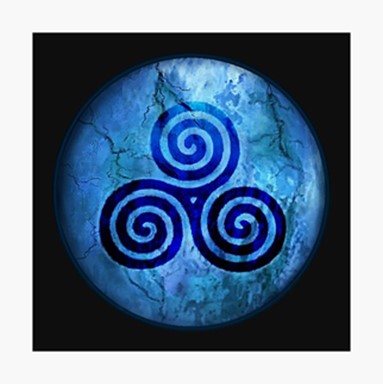
In searching The Urantia Book over the years for clues about our missing Divine Mother, I found at least part of the answer for her disappearance (or submergence as the case may be) in Paper 104, “Growth of the Trinity Concept.” Even long-time students of The Urantia Book may have overlooked the fact that the revelation of the Paradise Trinity—the Universal Father, the Eternal Mother Son, and the Infinite Spirit—was made by the Prince’s staff to the people of Urantia half a million years ago. It sadly vanished in the darkness that overcame our world after the planetary rebellion some 200,000 years ago [104:1.1].
The Trinity concept was later revived and taught by Adam and Eve around 38,000 years ago in the first and second gardens [104:1.2]. However, with the default of the Adamic mission and the passage of many millennia, the concept of a Three-in-One God had faded by the time Machiventa Melchizedek appeared on the world stage around 4,000 years ago, although it was not altogether obliterated thanks to the teachings of the Sethite priesthood [104:1.5].
Machiventa Melchizedek’s primary mission was to prevent the extinction of revealed truth about God, including the Trinity concept, and to revive the concept of One God Above All Gods, thereby preparing the minds of humanity for greater receptivity to the imminent human bestowal mission of the Creator Son on our world. Machiventa accomplished this supreme objective by developing a school of missionaries who went to the ends of the earth with their message of El Elyon, the Most High, and the Trinity concept tucked in there for those who could receive it.
It’s fascinating to note that the Salem missionaries found a much greater receptivity for the Trinity concept in the cultural minds of the people of India and China than they did in the West.
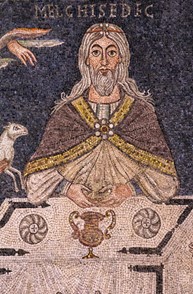
Through the activities of the Salem missionaries the Melchizedek teachings of the Trinity gradually spread throughout much of Eurasia and northern Africa.
Among the Hindus the trinitarian concept took root as Being, Intelligence, and Joy. (A later Indian conception was Brahma, Siva, and Vishnu.) While the earlier Trinity portrayals were brought to India by the Sethite priests, the later ideas of the Trinity were imported by the Salem missionaries and were developed by the native intellects of India through a compounding of these doctrines with the evolutionary triad conceptions.
The Buddhist faith developed two doctrines of a trinitarian nature: The earlier was Teacher, Law, and Brotherhood; that was the presentation made by Gautama Siddhartha. The later idea, developing among the northern branch of the followers of Buddha, embraced Supreme Lord, Holy Spirit, and Incarnate Savior. [Paper 104:1.4-6, pages 1144.1-3]
While the trinitarian concept took root in Hinduism and Buddhism, it failed to take hold among the Hebrews and the people of the Near East who clung tenaciously and zealously to a monotheistic Father God at the expense of the Trinity concept of God. The author of Paper 104 also asserts that the followers of Mohammed later had the same intellectual difficulty as the Hebrews in tolerating a trinitarian God, for they could not reconcile it with monotheism, the doctrine of one God. They, too, found it difficult to separate the concept of trinitarianism from that of polytheism [104:1.9].
Machiventa found it very difficult to teach the Palestinian Bedouins about the Universal Father, the Eternal Son, and the Infinite Spirit. Most of his disciples thought that the Trinity consisted of the three Most Highs of Norlatiadek… [Paper 104:1.3, page 1143.6]
The Hebrews knew about the Trinity from the Kenite traditions of the days of Melchizedek, but their monotheistic zeal for the one God, Yahweh, so eclipsed all such teachings that by the time of Jesus’ appearance, the Elohim doctrine had been practically eradicated from Jewish theology.
The followers of the Islamic faith likewise failed to grasp the idea of the Trinity. It is always difficult for an emerging monotheism to tolerate trinitarianism when confronted by polytheism. The great monotheists, the Hebrews and Mohammedans, found it difficult to distinguish between worshiping three gods, polytheism, and trinitarianism, the worship of one Deity existing in a triune manifestation of divinity and personality. [Paper 104:1.8-9, pages 1144.5-6 emphasis added]
Jesus did not fare much better with his disciples in attempting to elevate and expand their thinking about God beyond the racial concept of Yahweh, the advanced idea of the Lord God of Israel.
Jesus taught his apostles the truth regarding the persons of the Paradise Trinity, but they thought he spoke figuratively and symbolically. Having been nurtured in Hebraic monotheism, they found it difficult to entertain any belief that seemed to conflict with their dominating concept of Yahweh. And the early Christians inherited the Hebraic prejudice against the Trinity concept. [Paper 104:1.10, page 1144.7]
Jesus reminded his disciples of the plural meaning of Elohim, the earlier name for God among the Hebrews, which was later supplanted by the singular monotheistic concept of Yahweh:
Elohim. From the times of Adam the teaching of the Paradise Trinity has persisted. Do you not recall how the Scriptures begin by asserting that “In the beginning the Gods created the heavens and the earth”? This indicates that, when that record was made, the Trinity concept of three Gods in one had found lodgment in the religion of our forebears. [Paper 142:3.6, page 1598.7]
Thus, for many reasons having to do with cultural linguistics and the religious mindset of the Hebrews and other ancient Semitic tribes, the Trinity concept did not gain traction in the Near East. Instead, it gave way to an enduring, paternalistic, monotheistic God that squeezed out the mother function of God and the concept of the Paradise Trinity as a Divine Family of Personal Deities.
The Long Slow Path to Recognizing, Understanding, and Embracing the Trinity Concept
I would like to advance the idea that a primary concept of God that the religious minds of our generation and the future must crack open and absorb into our evolving belief systems and progressive planetary civilization is: Trinitarianism and monotheism are not contradictory or incompatible.
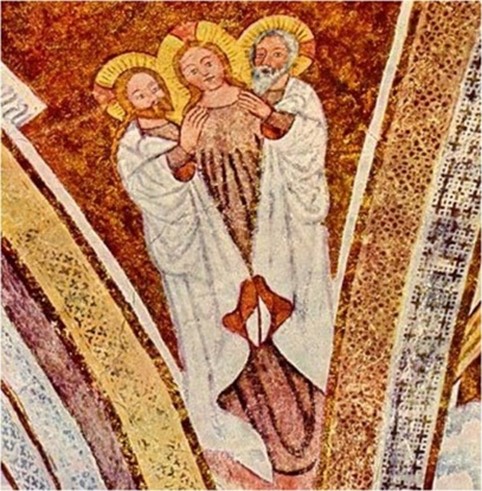
The One God of All embraced in monotheism is actually and has always been Three-Persons-in-One-God! The Trinity of Three Existential Persons of Eternity—the Three Sources and Centers of absolutely everything that exists in the Universe of universes—was revealed many times in the past but was poorly understood, often rejected, and lost time and time again in the course of human evolution.
The embrace of Trinitarianism enables people to realize and make use of the knowledge that each of the Three Paradise Deities has unique and diverse functions that nurture us, teach us, guide us, and help us grow in Godlikeness as they draw us toward them in Paradise through the personality circuit of the Father, the spirit gravity of the Son, the mind gravity of the Spirit, and the stupendous activity of God the Sevenfold in the evolutionary universes of space and time.
In combination and association, the Paradise Trinity presents evolutionary minds with a balanced approach to the qualities and attributes of God which are chiefly LOVE and LAW. In a way, these aspects of the nature of God represent a balanced blend of mother-like and father-like qualities in the very fabric of life itself in the grand universe.
However, if any one or two of the Persons of the Trinity are diminished or removed from the religious cultural understanding of God, then I think people suffer the relational loss, in some measure, of those associated characteristics and traits of God in their collective culture and personal belief system.
I think it is fair to suggest that such an imbalance in our understanding of God adversely affects cultural development and the progress of civilization towards light and life insofar as the proper integrated functioning of Love and Law in society is not achieved. We may suffer from an over-emphasis on Law at the expense of Love and become slaves to authority. Conversely, an over-emphasis on Love at the expense of Law may lead to a lack of discipline and self-regulation.
This imbalance shows up in many social groupings and religious cultures, as we are presently witnessing in Iran’s severe civil unrest and America’s culture wars. In contrast with the imperfect evolutionary worlds of the superuniverse, the proper balance of Love and Law is perfectly manifest in the exquisite harmony of Paradise-Havona.
Through the recognition of the Trinity concept, the mind of man can hope to grasp something of the interrelationship of love and law in the time-space creations. Through spiritual faith, man gains insight into the love of God but soon discovers that this spiritual faith has no influence on the ordained laws of the material universe. [Paper 104:2.3, page 1145.4]
Interestingly, the early Christians had a concept of the Trinity, albeit a confused one concerning the nature and function of each of the Three Persons of Deity. In the study of the doctrinal history of the Trinity in the Christian religion, one observes there has long been debate and confusion about the Godhead, especially the Third Person of the Trinity.
In fact, Eastern and Western Christianity remain divided to this day, among other theological issues, on whether or not the Third Person of the Trinity—the Holy Spirit—proceeds from the Father and the Son, or only from the Father. This dispute ultimately led to the Great Schism between Catholicism and the Orthodox Church in 1054, with Catholics upholding the view of the origin of the Spirit in both the Father and the Son.
Various Christian sects disagree about the Godhead, and whether or not the Holy Spirit is even a person or just an energy or life force of God. Jehovah’s Witnesses, for example, do not believe in the Trinity. They believe that God is almighty, Jesus is a mighty God, and the Holy Spirit is God’s active force.
Other Christian sects interpret the Holy Spirit as what the Urantia revelation calls the Spirit of Truth. None understand the Holy Spirit as the Creative Daughter of the Infinite Spirit, the personal presence of the Universe Mother Spirit who is the bestower of life and mind in her evolutionary universe. None currently know her as the eternal co-creator and co-ruler with our Creator Son Michael of the local universe in which we live.
Consider what The Urantia Book tells us about the early Christian concepts of the Trinity:
The first Trinity of Christianity was proclaimed at Antioch and consisted of God, his Word, and his Wisdom. Paul knew of the Paradise Trinity of Father, Son, and Spirit, but he seldom preached about it and made mention thereof in only a few of his letters to the newly forming churches. Even then, as did his fellow apostles, Paul confused Jesus, the Creator Son of the local universe, with the Second Person of Deity, the Eternal Son of Paradise.
The Christian concept of the Trinity, which began to gain recognition near the close of the first century after Christ, was comprised of the Universal Father, the Creator Son of Nebadon, and the Divine Minister of Salvington—Mother Spirit of the local universe and creative consort of the Creator Son.
Not since the times of Jesus has the factual identity of the Paradise Trinity been known on Urantia (except by a few individuals to whom it was especially revealed) until its presentation in these revelatory disclosures. [Paper 104:1.11-13, pages 1144.8-1145.1]
From these passages, we can see that our world has a long way to go intellectually and spiritually in coming to recognize, accept, and embrace the mystery of Three-Persons-in-One-God. Perhaps we can also discern that the deeply embedded concept of a single, monotheistic, paternalistic God, divorced from a proper understanding of the other two Deities of the Paradise Trinity, is an impediment to the progress of our spiritual planetary civilization.
Tens of millions of people in the modern age are rejecting Christianity (not Jesus per se) for good reason because of its outmoded symbols and refusal to keep pace with the evolution of culture. A steadily growing segment of the western world, in particular, refutes the concept of an Old Testament God that is still embedded in our culture as a stern, judging, authoritarian, punishing Father figure. This is the very symbolic image that Jesus did his best to supplant with his teaching of a loving, all-forgiving Father in heaven and the divine family of God.
The price we pay for the outmoded and severely limiting concept of monotheism, I think, is the loss of the plenitude of meanings and values that are available in the Trinity. Monotheism must yield sooner or later to the realization and fuller appreciation of the beneficent gifts, powers, and influences of all Three Persons of the Trinity—the Universal Father, Eternal Mother Son, and Conjoint Actor (Infinite Spirit) in equal measure—and their Creator Sons and Creative Daughters who go out into the superuniverses of space and time to form their own divine families.
There is an undeniable relationship between our individual and collective realization and embrace of the Original Family of Paradise, along with the Divine Parents of our local universe, and the cultural and spiritual meanings and values we place on men, women, children, and families in our global civilization.
We can see signs of a stirring, a new awakening, in the collective spiritual consciousness of humankind in the 20th and 21st centuries to expand the concept of God from a single Father alone in the void, to a Trinity of Deities who are utterly loving, personality-bestowing, life-giving, lawgiving, mind-endowing, and continuously ministering to us, in an unceasing effort to help us grow up to become like them.
Their boundless, individual and undivided, personal natures are the essence and source of LOVE and all that is good, true, and beautiful. They have created everything in love and by law. Ever must these two realities of love and law, of mother-like and father-like characters, functions and traits, by which all things and beings are made, seek for balance in the evolutionary worlds of space and time until they reflect the exquisite balance and harmony of Havona-Paradise.
